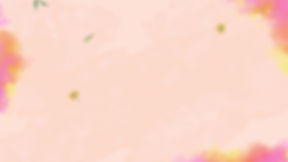

Minimally invasive treatments

The use of minimally invasive treatments for pilonidal disease has expanded in the past few years, including minimally invasive trephine surgery, endoscopic treatment, and laser beam therapy.
1. A minimally invasive method of treating pilonidal disease was published in 2008. With this approach pits are individually excised using trephines and underlying cavities and tracts are cleaned from hairs and debris). This treatment targets and removes only the factors that form and maintain the disease and avoids unnecessary excision of the healthy tissue around. The operation is usually performed under local anesthesia with no hospitalization. Healing of the tiny wounds takes place within 2-4 weeks with minimal postoperative discomfort.
The negligible amount of resected tissue results in a much better cosmetic outcome, no deformity and minimal scars, in comparison to any other surgical solution.
Aka: Lord & Millar operation, Bascom pit picking operation, Gips trephine operation.
The picture shows the punching tools (trephines), used to remove each pit and subcutaneous tracts.

Excision of a pilonidal pit using a 4mm trephine and extracting hairs from the sinus.

*An extended explanation of the minimal treatment with trephine, at the bottom of this page↓.
2. A novel minimally invasive technique, published in 2014, is a video-assisted endoscopic treatment for pilonidal disease. Endoscopes are thin tubes with a camera and light at their ends. The endoscope is inserted into the pilonidal subcutaneous cavity. It enables scanning and displaying the cavity and its extensions on a video monitor. It also enables the removal of hair and necrotic tissue under direct visual control. The endoscope also allows cavity walls and contents to be cauterized with electric current or laser beam.
3. Burning of the pilonidal cavity and openings with a laser beam is also possible without a video-assisted endoscope: Following initial cleaning, an optic fiber is inserted directly into the pilonidal cavity. The fiber carries a laser beam that cauterizes and shrinks the cavity.
Endoscopic and laser treatments for pilonidal disease have the same advantages as trephine surgery. These include smaller incisions, less pain and scarring, and a faster recovery time. However, they require expensive resources and equipment. Also, there is no proof yet that they are better at curing the disease in the long-term than minimally invasive trephine surgery.
4. Another minimal treatment for pilonidal disease involves injecting carbolic acid (phenol) into the pilonidal cavity as either a single treatment or as a complement to trephine surgery. This often requires additional injection sessions and is not widely used by surgeons.

Additional information on trephine surgery.
The principle of minimal surgery is based on the special structure of the basic pilonidal unit:
the unit consists of a dermal opening (pit) that leads to a narrow skin-lined canal. The canal extends to an hair containing inflamed subcutaneous pocket.
Pilonidal disease may include one or several units along the natal cleft and the pockets of the units sometimes merge into one cavity.
During surgery, each of the openings and canals is individualy excised with a trephine (punch) and a canal of several millimeters wide is created, denuded of skin lining. The wider canal enables effective cleaning of the subcutaneous cavity and allows continued drainage from the cavity for several days until it shrinks and disappears along with the opening in the skin.



Cross section along the bottom of the natal cleft illustrating the excision of pits and tracts and cleaning of the underlying cavity.
Minimal procedures using trephines with complete healing within few weeks.


